If you’re planning for a complete makeover of your home’s water supply, you’re probably considering installing both a water softener and a water filter.
It’s a great idea, ensuring that your water isn’t only clean and great-tasting, but that it’s also free from minerals that cause extensive limescale damage around the home.
But things get a bit complicated when it comes to installing the systems. Which goes where? Is there a “proper” order? Will one of the systems be completely ineffective if you install it before or after the other one?
We’ll be answering all these questions and more in this guide.
But first, the short answer:
Whole house water filters should be installed first when water contains a high amount of chlorine or sediment, and water softeners should go first when water has high hardness and manageable levels of chlorine, sediment, and iron.
Keen to learn more about water softeners and water filters, and how to choose which one to install first? Let’s begin with an overview of the whole house water filter and softener.
Table of Contents
📤 What Is a Whole House Water Filter?
A whole house water filter is the biggest type of water filter available. Whole house filtration systems are installed at your home’s point of entry, providing a filtered water supply throughout your plumbing system.
There are several different types of whole house water filters, and choosing the right filter will help you to target the problem contaminants in your water supply.
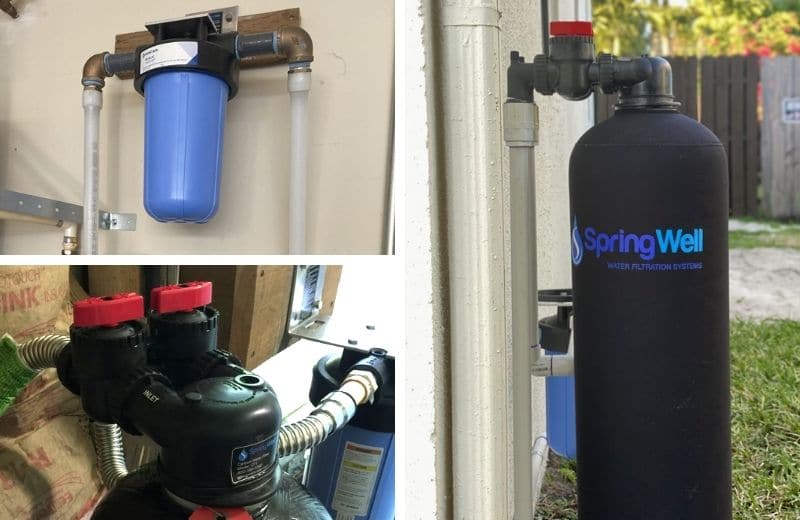
🚰 What Is a Whole House Water Softener?
A whole house water softener is the only type of water softener available (you can’t buy a water softener that just softens your under-sink drinking water, for instance). Like whole house water filters, water softeners are installed at your POE before your hot water heater.
Water softener systems come in two common kinds: traditional salt-based softeners and salt-free conditioners. As the name suggests, salt-based softeners soften water with salt, while salt-free softeners use a salt-free conditioning technique, like template-assisted crystallization.
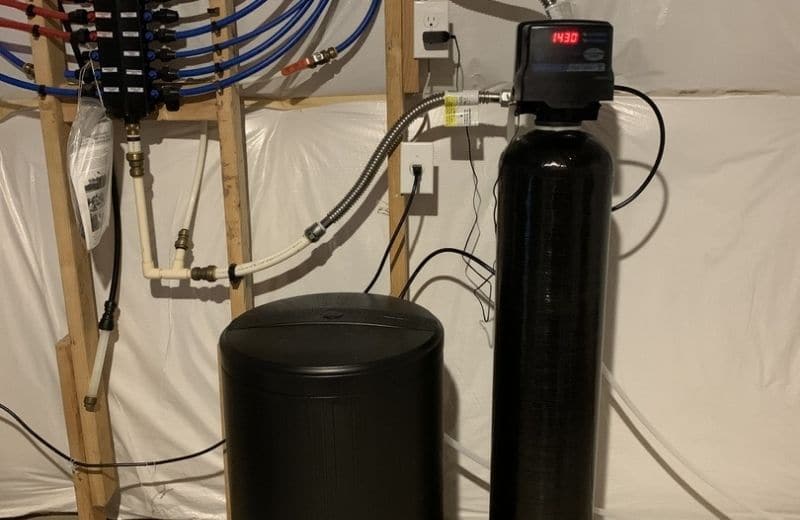
📰 When You Need A Water Softener And a Water Filter
We won’t get too detailed about the ins and outs of how whole house water filters and water softeners work. But you might still be unsure about whether you need a water softener and a water filter, or just one or the other.
Let’s put it this way: a water softener can’t perform the role of a water filter, and vice versa.
This means that, if you want soft and filtered water, you’ll need to buy a water softening system and a water filter.
To give an example, let’s say that you have a municipal water supply, which means you have chlorinated water that tastes like chemicals. But your water is also pretty hard, and you’ve been dealing with limescale-associated issues for the last decade.
In this case, buying a whole house water filter (to deal with the chlorine taste and smell) and a water softener (to deal with the scale buildup) just makes sense.
Considering more than 80% of homes in the US have hard water, and over 90% of US homes have chlorinated water, there’s a good chance that you need a water softener and a water filter.
Related: Understand the differences between sediment filters and water softeners.
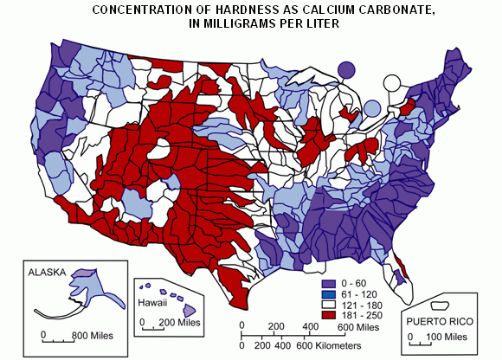
🤔 Which Goes First: A Whole House Water Filter or a Water Softener?
Now for the reason why you’re here: to figure out whether you’re supposed to install a whole house water filter or a water softener first.
Slightly frustratingly, there’s no official right or wrong answer. There are several factors that affect which system should be installed upstream of the other, which we’ll be looking into in this section of the guide.
Well Water or Municipal Water?
Where you get your water from will likely have an effect on the order of your whole house water filter and water softener.
Most people get their water from a municipal water supply. But if you’re off the grid or you have a large or old property, you might get your water from a private well.
Public water systems are typically supplied by groundwater (that’s water from an underground source), although some systems use surface water bodies (water from an on-ground source).
Well water supplies are almost always from an underground aquifer (a chamber between layers of rock).
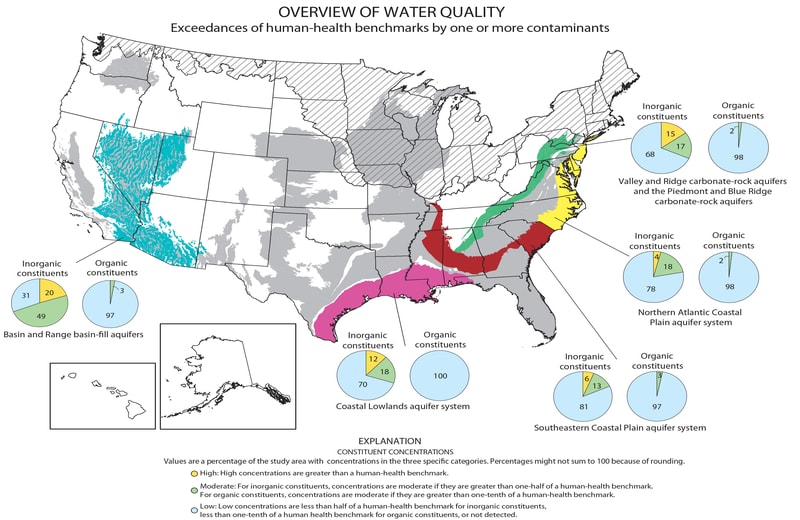
Your water source will determine whether you need a water softener, a water filter, or both. It’ll also tell you which way around to install your water softener and water filter, depending on what your water contains.
City water sources contain common contaminants, and well water supplies contain a whole different selection of impurities.
We’ll be looking at these contaminants in more detail below.
Chlorinated or Non-Chlorinated Water?
According to the National Primary Drinking Water Regulations, public water must be treated to limit levels of harmful contaminants and protect public health. This treatment almost always involves disinfection with chlorine or chloramine. So, if you get your water from a municipal supplier, you can safely assume it’s chlorinated.
Disinfecting water is an important process because it kills microbiological contaminants like viruses and bacteria, which make us sick. Without disinfection, our water could be a breeding ground for germs. But chlorine-treated tap water has an unpleasant taste, and most people would prefer not to drink chemicals in their water.
We strongly recommend testing your water’s chlorine content if you plan to install a water softener in your home.

Chlorine levels higher than 1.0 PPM are known to damage a water softener’s resin beads by oxidizing them, causing them to lose their structure. This massively reduces the effectiveness of your water softener, and significantly lowers the lifespan of the resin.
How can you prevent this damage to your water softener?
First, look for water softener systems with a 10% crosslink resin, which is better equipped to deal with high chlorine levels. But for ultimate protection, install a whole house water filtration system that removes chlorine and chlorine disinfection byproducts, such as a carbon-based filter, upstream of your water softener. This means the chlorine will be removed before it enters the water softener, so there’s no risk of damage whatsoever.
To sum up: Removing chlorine prior to softening your water will protect your water softener.
High-Sediment or Low-Sediment Water?
If you get your water from a private well, there’s a good chance that your water contains a lot of sediment.
During municipal water treatment, sediment is filtered in a special filtration stage. Well water doesn’t receive the luxury of advanced filtration, so it contains a lot more sediment than city water.
Common sediment found in well water is sand, silt, flecks of rust, dirt, dust, and clay. If your water has a high sediment content, you’ll likely know it. Sediment particles are typically large enough to see by the human eye, and they make water murky and turbid.
Sediment-laden water is bad for your entire plumbing system, and is known to drastically shorten the lifespan of your appliances – including your water softener.
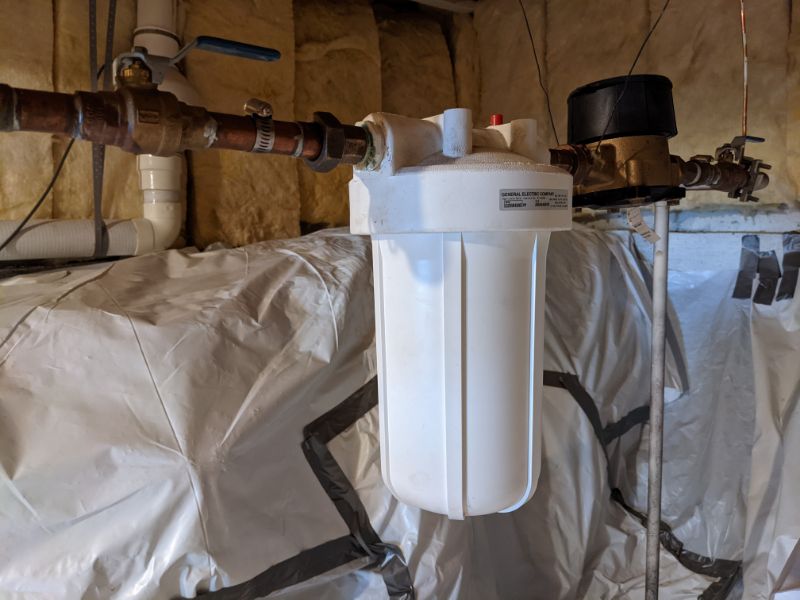
In this case, you don’t necessarily need a whole house water filtration system to remove the sediment. Most water softeners come with a sediment filter that targets large sediment particles that could clog the resin.
But if your water softener doesn’t come with its own dedicated sediment filter, and you plan to install a whole house filtration system anyway, look for a filter system that has a sediment pre-filter. Most multi-stage filter systems come with sediment filters, so this won’t restrict your choices.
If you don’t know how much sediment your well water contains, get it tested.

Luckily, the majority of people on a local water supply don’t need to worry about sediment, so water softening pre-treatment with a sediment filter is less important.
Iron-Rich or Iron-Free Water?
The final water contaminant that affects the order of your whole house filter and softener is iron.
Again, iron is nearly always found in well water. But it’s still worth getting your water tested if you’ve noticed signs of iron in your home, like red stains in your toilet, even if you get your water from a municipal supply.
Water softeners aren’t designed to remove high levels of iron. Most water softeners can remove about 1-3 PPM of iron, although some of the better systems nowadays can remove more than 5 PPM. That’s no good if your water contains 20 or 30 PPM of iron.
Iron affects the lifespan of the water softener resin bed, and the softener will need more frequent cleaning and resin replacements as a result. High levels of iron can also slip through the resin bed, so your water quality won’t significantly improve.
How do you protect your water softener from iron? The best solution is to install a whole house iron filter, such as an air injection/oxidation filter, before your soft water system. This means you won’t have to worry about iron damaging your water softener resin, because it’ll be removed before it enters the softener.
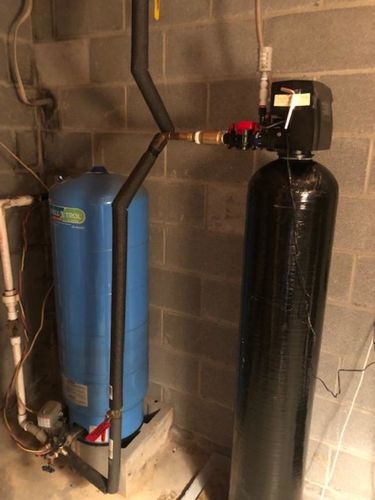
Backwashing and Water Pressure
When a water softener regenerates, the first stage of the process is known as backwashing.
During this process, water is carried in the opposite direction through the resin tank, which removes hardness minerals from the resin bed. When the resin is free from these minerals, it can be refilled with sodium ions, ready to begin the softening process again.
A high flow rate is essential for proper backwashing. Without enough water pressure, there wouldn’t be enough force to properly flush the softening resin.
If you install a whole house filter before a water softener, the water filtration stages are likely to slow down your water flow, causing your water pressure to drop. The result? There isn’t a fast enough water flow rate to properly wash the resin bed. Eventually, the resin bed will clog to the point of being completely inefficient.
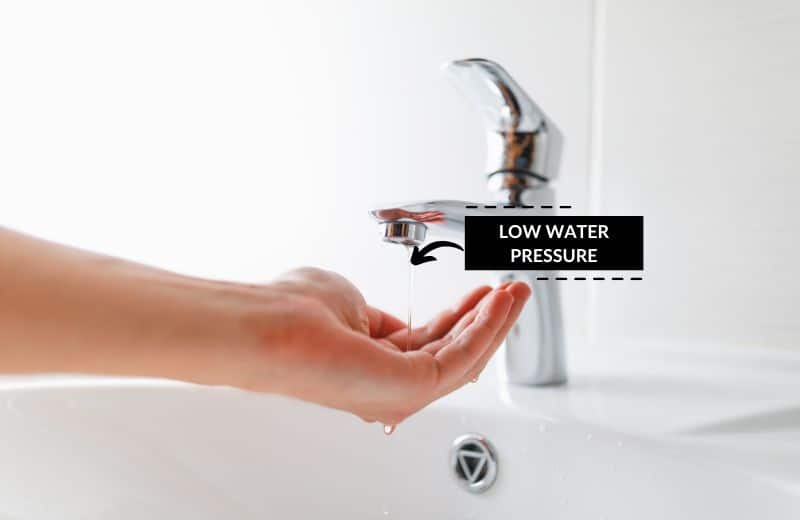
This isn’t a guaranteed end result from installing water filters before water softening systems. A water filter protects a softener in many ways, and as long as you buy a filter with a high enough flow rate, you’ll be fine.
Speak to the manufacturer of the filter system you’re interested in and let them know you plan to install the system before a water softener. They’ll be able to help you size the system correctly for your water pressure needs.
Some specialized water filters, such as typical iron filters, also need to be backwashed. These filters are usually installed before a water softener, so you need to make sure there’s a good enough flow rate to the water softener while the system is backwashing.
As long as you carefully consider the flow rates of both water treatment systems, you shouldn’t have an issue with installing both a softener and a water filter to treat your drinking water.
🧠 Water Softener and Filter Placement FAQ
Got any more questions about the placement of a whole house softener or filter? We’ve answered them here.
Should you install a water softener or filter before or after your well pressure tank?
There’s no right or wrong answer here. Some people install their water filter before their well pressure tank, then install their softener after. This is a good setup, especially if you install a sediment filter before the pressure tank, as this will protect the tank. Alternatively, you can install both your water filter and softener after the pressure tank, as there’s no real reason to filter or soften your water before this point.
Should you install a water softener or filter before or after your water heater?
Both systems should be installed upstream of your water heater. A water softener protects against limescale damage, which affects the efficiency of your heater, and an iron or carbon filter protects against contaminants that could lead to rusting inside your heater. If you install the systems after your heater, you’ll miss out on the benefits of filtered, softened hot water.
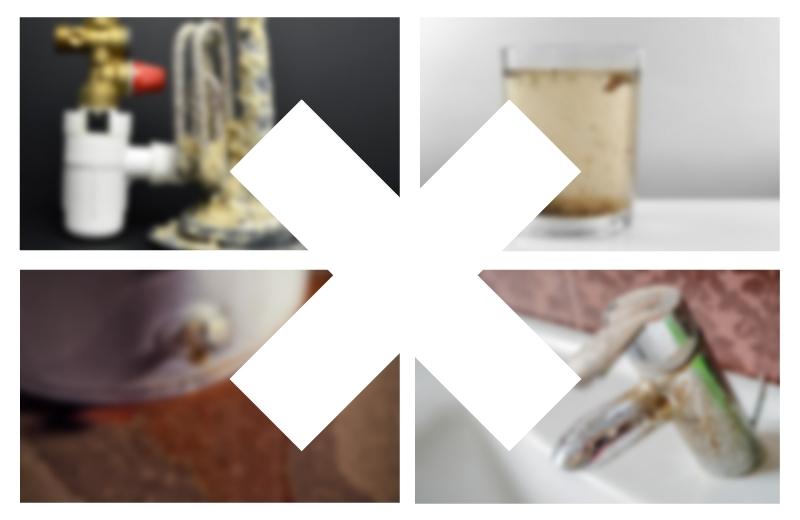
Should you install a pre-filter for a water filter and softener?
It isn’t necessary. For instance, if your carbon filter system already has a pre-filter to tackle sediment, there’s no reason to buy one for your salt-based water softener, too. But if your softener comes with a pre-filter, it won’t hurt to protect the system with an extra layer of filtration.
📝 Takeaway
You now know the instances when a whole house filter should be installed before a softener, and vice versa. But whole house water filtration might not always be necessary. If you’re dealing with sediment, for instance, a sediment filter installed before the softener should do the job.
If you haven’t already, your obvious next step is to test your water. Once you know which contaminants you’re dealing with, you can decide which filter to install alongside your softener – whether that’s a carbon filter, a sediment filter, an iron filter, or something else – so that both the systems can work as efficiently as possible.
